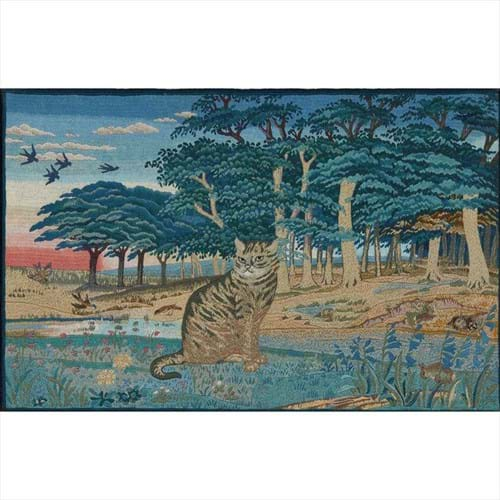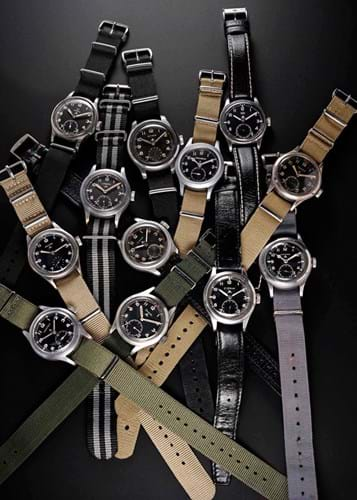1. Bronze lion and stallion
It was catalogued by Key’s of Aylsham simply as ‘a patinated bronze group of a lion attacking a horse’ but this large and robustly modelled group merited – and to an extent commanded - more attention.
Estimated at £100-150, at the March 25 sale the 12in (30cm) across sculpture went to a buyer using thesaleroom.com at £3300. The ultimate prototype of the model is a fragmentary antique marble restored in the 16th century and today housed in the Capitoline Museum, Rome.
However, it is much better known from the series of bronzes associated with the workshop of the Florentine Mannerist sculptor Giambologna (1529-1608) and his assistants Antonio Susini and Pietro Tacca. Should this be confirmed as a 17th century cast, it will have been a bargain.
2. Silver ingot
Sycee or yuanbao were a key form of currency in China for more than a millennia. While coins were used for small transactions, these solid silver ingots (made by local goldsmiths rather than a designated mint) were used when a larger medium of exchange was required. In addition to a multitude of different regionally-specific forms (saddle, boat and drum forms are perhaps the most common) sycee differ obviously in size. Some weighed less than one tael (about one ounce). The largest, such as this Qing example offer for sale by German auctioneer Eppli of Leinfelden-Echterdingen on March 28, were cast with bullion weighing 50 taels.
Needless to say, most were melted early in life to cast silver coins and there are many reproductions and forgeries on the market. However, this example, tipping the scales at 1875g, has a series of marks for the emperor Jiaqing (1796-1821) and was deemed of the period. The hammer price for ‘the largest coin ever made’ was tendered via thesaleroom.com at €14,000 (£12,000).
3. May Morris panel
Although often overshadowed by her famous father, May Morris (1862-1938) was herself an important figure in the British Arts & Crafts movement. As early as 1885, at the age of 23, she became manager of the Morris & Co embroidery department at Merton Abbey and continued there until the death of William Morris in 1896. Much of her later works were private commissions. This 18in by 2ft 4in (45cm x 70cm) embroidered panel has a handwritten inscription reading: Hunter at Bay was designed and worked by me in 1935, May Morris and a paper label for the Morris family’s Cotwolds home, Kelmscott Manor. The May Morris archive, in the Ashmolean Museum since 1941, includes the watercolour design for this piece. Estimated at £3000-5000 at Lyon & Turnbull’s ‘live online’ sale on April 1, it sold at £8500.
4. Kangxi dragon dish
It is badly damaged but this large shallow dish offered by Aldridges of Bath on March 31 is a fine example of Kangxi mark and period famille verte porcelain. Measuring over 14in (35cm) across, it has two forms of decoration – incised five-clawed dragons chasing the flaming pearl and enamelled leafy branches bearing peaches and pomegranates rendered in colourful shades of green, yellow, aubergine and blue. As the illustration suggests, a large section had broken away (and the pieces to repair it were incomplete) but it found many admirers at the estimate of just £150-250. Several similar dishes bearing this double-decoration have appeared for sale, including two sold by Christie’s Hong Kong in 2013 for close to HK$1m (around £100,000) each. In that context the £4800 bid via thesaleroom.com for this piece was not excessive.
5. ‘Dirty Dozen’ watches
The March 25 ‘online only’ sale at London specialists Watches of Knightsbridge included a complete set of the so-called ‘Dirty Dozen’ watches - the 12 Swiss manufacturers commissioned to supply the British Ministry of Defence during the Second World War. It sold as a single lot for £25,000.
he full set consists of watches by Buren, Cyma, Eterna, Grana, Jaeger Le Coultre, Lemania, Longines, IWC, Omega, Record, Timor and Vertex. The majority have serial numbers to identify the wearer and symbols to show them to be government property. Many are engraved WWW which back in the 1940s stood for Watch, Wrist, Waterproof. The rarest of the ‘dozen' is the unassuming Grana military issue manufactured to MOD specifications by Kurth Freres. It has been estimated that around 1500 units were made compared to equivalents by Omega (25,000) or IWC (8000). It alone can bring over £5000 with one sold by Shropshire auctioneer Trevanion & Dean in May 2019 for £9000.










